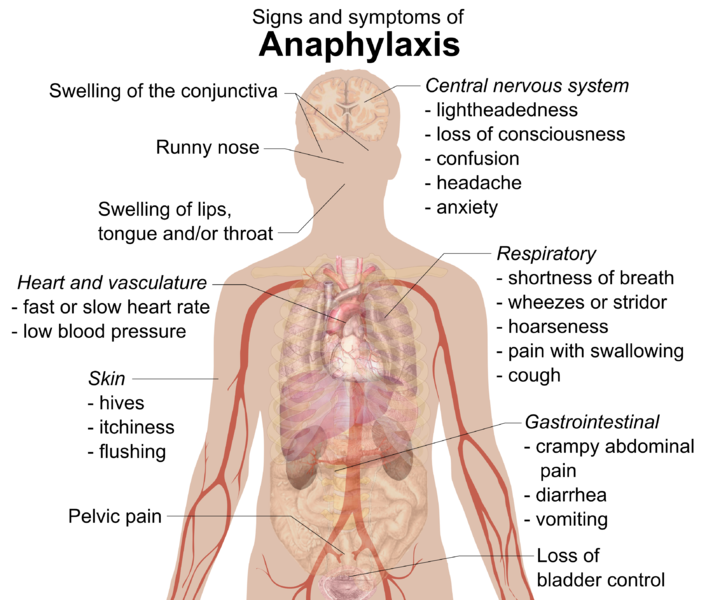The U.S. Food and Drug Administration today approved Omontys (peginesatide) to treat anemia, a condition in which the body does not have enough healthy red blood cells, in adult dialysis patients who have chronic kidney disease (CKD).
http://www.fda.gov/NewsEvents/Newsroom/PressAnnouncements/ucm297464.htm
What is anemia? From the NIH:
Anemia is a condition in which your blood has a lower than normal number of red blood cells.
Anemia also can occur if your red blood cells don't contain enough hemoglobin (HEE-muh-glow-bin). Hemoglobin is an iron-rich protein that gives blood its red color. This protein helps red blood cells carry oxygen from the lungs to the rest of the body.
If you have anemia, your body doesn't get enough oxygen-rich blood. As a result, you may feel tired or weak. You also may have other symptoms, such as shortness of breath, dizziness, or headaches.
Severe or long-lasting anemia can damage your heart, brain, and other organs in your body. Very severe anemia may even cause death.
Overview
Blood is made up of many parts, including red blood cells, white blood cells, platelets (PLATE-lets), and plasma (the fluid portion of blood).
Red blood cells are disc-shaped and look like doughnuts without holes in the center. They carry oxygen and remove carbon dioxide (a waste product) from your body. These cells are made in the bone marrow—a sponge-like tissue inside the bones.
White blood cells and platelets (PLATE-lets) also are made in the bone marrow. White blood cells help fight infection. Platelets stick together to seal small cuts or breaks on the blood vessel walls and stop bleeding. With some types of anemia, you may have low numbers of all three types of blood cells.
Anemia has three main causes: blood loss, lack of red blood cell production, or high rates of red blood cell destruction. These causes might be the result of diseases, conditions, or other factors.
http://www.nhlbi.nih.gov/health/health-topics/topics/anemia/
Continuing with the 2012 FDA report:
Omontys is a new erythropoiesis-stimulating agent (ESA) that aids in the formation of red blood cells. It works by stimulating the bone marrow to produce more red blood cells, usually measured as hemoglobin levels, to reduce the need for transfusions in patients with CKD. Omontys is administered as a once-a-month injection.
“Omontys represents the first new FDA-approved and marketed ESA for this condition since 2001,” said Richard Pazdur, M.D., director of the Office of Hematology and Oncology Products in the FDA’s Center for Drug Evaluation and Research. “This new drug offers patients and health care providers the convenience of receiving ESA therapy just once per month instead of more frequent injections.”
Two randomized, active-controlled, open-label, multi-center clinical trials demonstrated the safety and efficacy of Omontys in patients with CKD who were on dialysis. The trials randomly selected a total of 1,608 patients with hemoglobin levels initially stabilized by ESA to receive either Omontys once monthly or to continue their current ESA (epoetin) treatment. Results showed Omontys was as safe and effective as epoetin in maintaining hemoglobin levels within the studies’ pre-specified range of 10 to 12 grams per deciliter.
The most common side effects observed in 10 percent or more of dialysis patients treated with Omontys were diarrhea, vomiting, high blood pressure (hypertension) and joint, back, leg or arm pain (arthralgia).
Omontys should not be used in patients with CKD who are not receiving dialysis or in patients with cancer–related anemia, according to the FDA-approved labeling. It also should not be used as a substitute for red blood cell transfusions in patients who require immediate correction of anemia. Omontys has not been shown to improve symptoms of anemia, physical functioning or health-related quality of life in patients with CKD on dialysis.
The FDA approved Omontys with a Risk Evaluation and Mitigation Strategy (REMS), which added safety measures consisting of educational elements for health care professionals and a requirement to assess drug use data.
Now fast forward to 2013, with the recall of this product.
Affymax, Inc. and Takeda Pharmaceutical Company Limited along with the U.S. Food and Drug Administration (FDA) are informing the public of a voluntary recall of all lots of OMONTYS® (peginesatide) Injection to the user level as a result of new postmarketing reports regarding serious hypersensitivity reactions, including anaphylaxis, which can be life-threatening or fatal.
To date, fatal reactions have been reported in approximately 0.02% of patients following the first dose of intravenous administration. The reported serious hypersensitivity reactions have occurred within 30 minutes after such administration of Omontys. There have been no reports of such reactions following subsequent dosing, or in patients who have completed their dialysis session. Since launch, more than 25,000 patients have received Omontys in the postmarketing setting. The rate of overall hypersensitivity reactions reported is approximately 0.2% with approximately a third of these being serious in nature including anaphylaxis requiring prompt medical intervention and in some cases hospitalization.
BACKGROUND: Omontys (peginesatide) Injection is indicated for the treatment of anemia due to chronic kidney disease in adult patients on dialysis and is packaged in 10 mg and 20 mg Multi-dose vials:
- 10mg Multi-dose Vials - NDC 64764-610-10 Lots C18685, C18881, C19258
- 20mg Multi-dose vials - NDC 64764-620-20 Lots C18686, C18696
What is anaphylaxis?

Anaphylaxis is a serious allergic reaction that is rapid in onset and may cause death. It typically causes a number of symptoms including an itchy rash, throat swelling, and lowblood pressure. Common causes include insect bites/stings, foods, and medications.
On a pathophysiologic level, anaphylaxis is caused by the release of mediators from certain types of white blood cells triggered either by immunologic or non-immunologic mechanisms. It is diagnosed based on the presenting symptoms and signs. The primary treatment is injection of epinephrine, with other measures being complementary.
http://en.wikipedia.org/wiki/Anaphylaxis